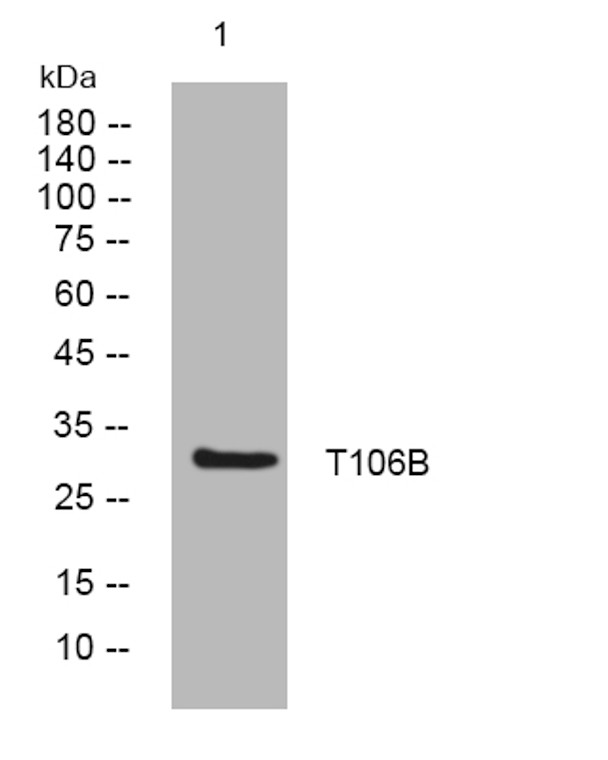| Host: |
Rabbit |
| Applications: |
WB |
| Reactivity: |
Human/Mouse/Rat |
| Note: |
STRICTLY FOR FURTHER SCIENTIFIC RESEARCH USE ONLY (RUO). MUST NOT TO BE USED IN DIAGNOSTIC OR THERAPEUTIC APPLICATIONS. |
| Short Description: |
Rabbit polyclonal antibody anti-Transmembrane protein 106B (72-122 aa) is suitable for use in Western Blot research applications. |
| Clonality: |
Polyclonal |
| Conjugation: |
Unconjugated |
| Isotype: |
IgG |
| Formulation: |
Liquid in PBS containing 50% Glycerol, 0.5% BSA and 0.02% Sodium Azide. |
| Purification: |
The antibody was affinity-purified from rabbit antiserum by affinity-chromatography using epitope-specific immunogen. |
| Concentration: |
1 mg/mL |
| Dilution Range: |
WB 1:500-2000 |
| Storage Instruction: |
Store at-20°C for up to 1 year from the date of receipt, and avoid repeat freeze-thaw cycles. |
| Gene Symbol: |
TMEM106B |
| Gene ID: |
54664 |
| Uniprot ID: |
T106B_HUMAN |
| Immunogen Region: |
72-122 aa |
| Specificity: |
This antibody detects endogenous levels of T106B at Human/Mouse/Rat |
| Immunogen: |
Synthesized peptide derived from the human T106B at the amino acid range 72-122 |
| Function | In neurons, involved in the transport of late endosomes/lysosomes. May be involved in dendrite morphogenesis and maintenance by regulating lysosomal trafficking. May act as a molecular brake for retrograde transport of late endosomes/lysosomes, possibly via its interaction with MAP6. In motoneurons, may mediate the axonal transport of lysosomes and axonal sorting at the initial segment. It remains unclear whether TMEM106B affects the transport of moving lysosomes in the anterograde or retrograde direction in neurites and whether it is important in the sorting of lysosomes in axons or in dendrites. In neurons, may also play a role in the regulation of lysosomal size and responsiveness to stress. Required for proper lysosomal acidification. (Microbial infection) Plays a role in human coronavirus SARS-CoV-2 infection, but not in common cold coronaviruses HCoV-229E and HCoV-OC43 infections. Involved in ACE2-independent SARS-CoV-2 cell entry. Required for post-endocytic stage of virus entry, facilitates spike-mediated membrane fusion. Virus attachment and endocytosis can also be mediated by other cell surface receptors. |
| Protein Name | Transmembrane Protein 106b |
| Cellular Localisation | Late Endosome MembraneSingle-Pass Type Ii Membrane ProteinLysosome MembraneCell MembraneColocalizes With Lamp1A Small Fraction Resides On The Cell Surface |
| Alternative Antibody Names | Anti-Transmembrane Protein 106b antibodyAnti-TMEM106B antibody |
Information sourced from Uniprot.org
12 months for antibodies. 6 months for ELISA Kits. Please see website T&Cs for further guidance







